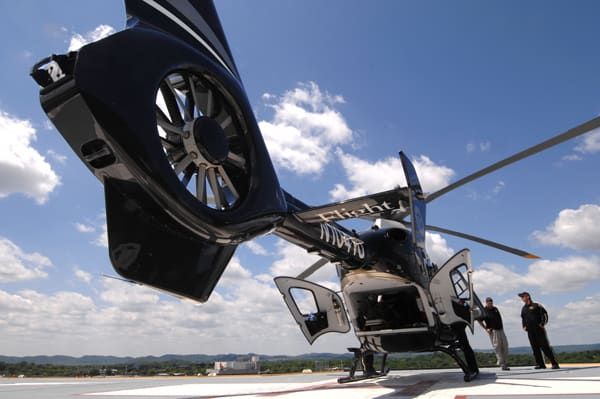By Will Peters
Contributor
Vanderbilt LifeFlight has added two new birds to its fleet.
The air ambulance service recently leased two new EC135 helicopters to replace two older BK117 models, which have been in service at Vanderbilt since 1987. The new aircraft, as well as LifeFlight’s three other EC145 helicopters, are made by American Eurocopter.
Vanderbilt has four helicopter bases spread across Middle Tennessee. The new aircraft replace one helicopter kept in Mt. Pleasant, called LifeFlight 4, and a spare that is used when one of the four helicopters is undergoing maintenance.
The twin-engine EC135 is widely recognized for its high performance and outstanding maneuverability and cost less to operate and maintain than the helicopters they are replacing. This cost-effectiveness is largely due to its simple design, which allows for fast and easy maintenance.
Chief flight nurse Wilson Matthews, R.N., E.M.T., said the increased reliability will enhance flight operations.
“(The BK117’s) were 18 and 22 years old. Parts were harder to get; we were always waiting for something from Germany.”
Each type of helicopter has unique features to consider when transporting patients. The new helicopters are
smaller in size but provide a smoother ride due to technology called anti-resonance isolation system (ARIS). The new helicopters also have enclosed tail rotors, which are safer when entering and exiting the aircraft.
The cockpit of the EC135 is nearly identical to that of the EC145, LifeFlight’s other helicopter, so pilots will experience a smooth transition when switching between the two.
The cockpits feature advanced avionics that allow for zero visibility flying, night vision goggle operations and landing using HTAWS (for Helicopter Terrain Avoidance Warning Systems), which alerts pilots of their proximity to the ground below. These systems enhance crew and patient safety while flying, a goal that
dominates the culture of Vanderbilt’s LifeFlight program.
Another key aspect of the new helicopters is that they burn less fuel.
“These helicopters are more fuel efficient. They burn about 10 gallons less each hour,” said pilot Bric Baker.
Comparing the new helicopters with the old, flight nurse Patrick Hall, R.N., E.M.T., drew the analogy, “This is a sports car. The 117 was a Cadillac.”
The EC135 has a swift cruise speed of 158 mph and can climb at a rate of 1,500 feet per minute. Compared with similar helicopters, the EC135 has high endurance — it can carry a heavier payload over a longer distance than any other twin-engine aircraft in its class.
The new helicopters are now completely integrated into the LifeFlight program and began transporting patients the last week of June.
